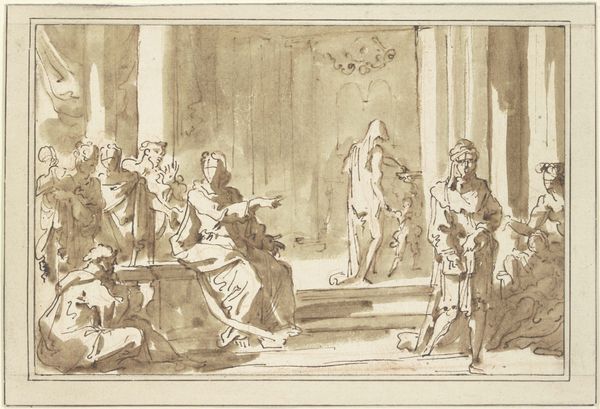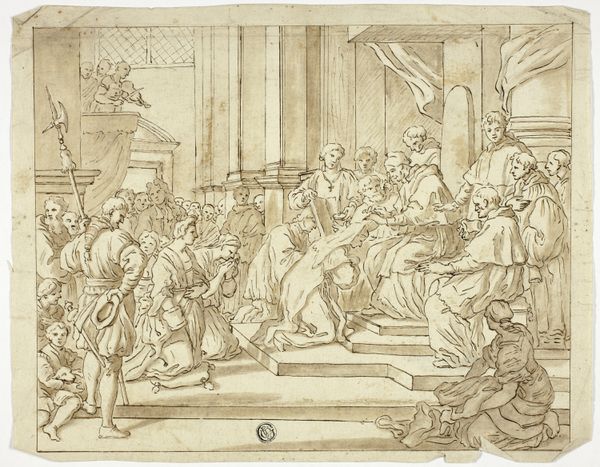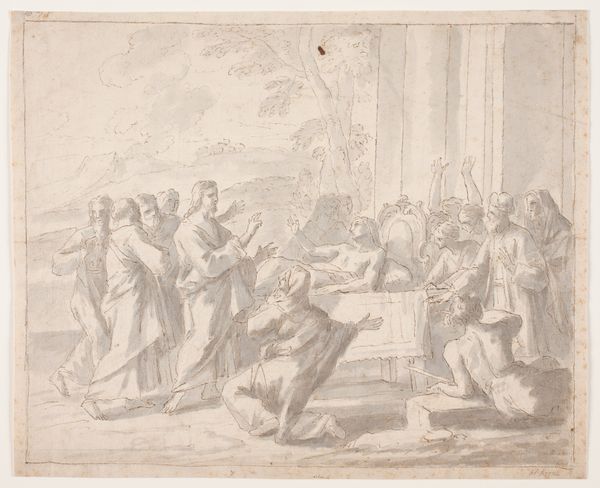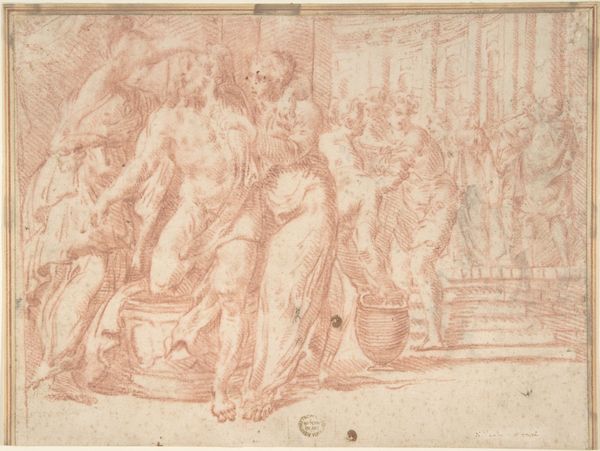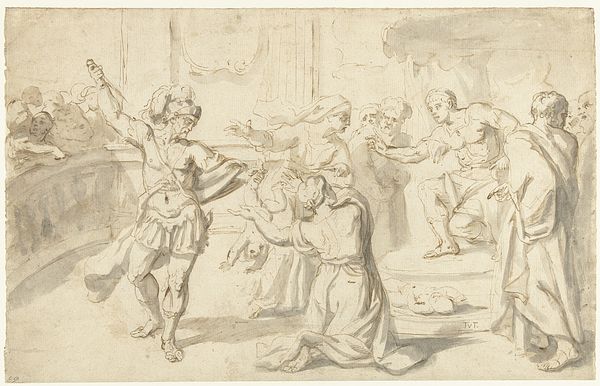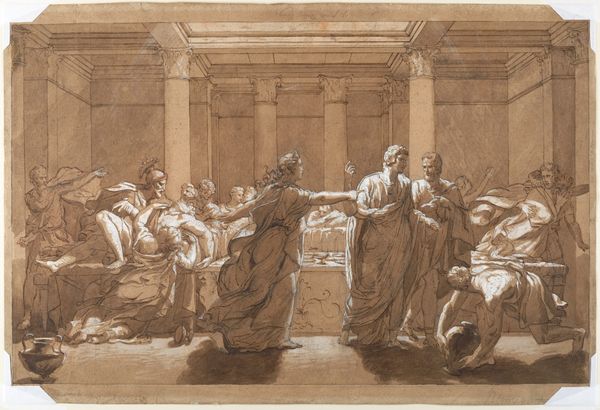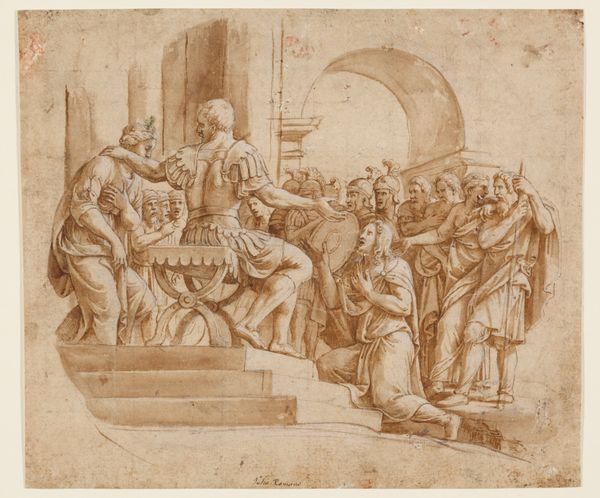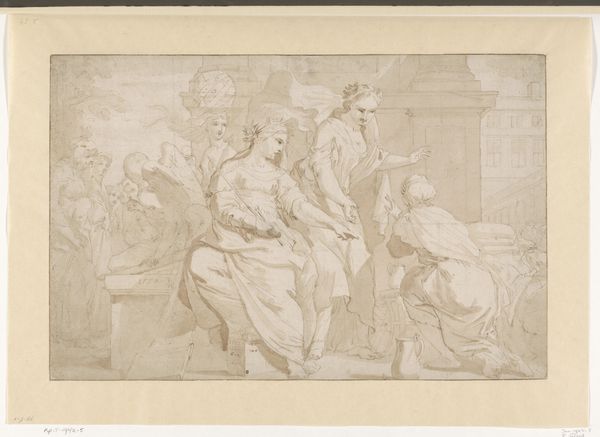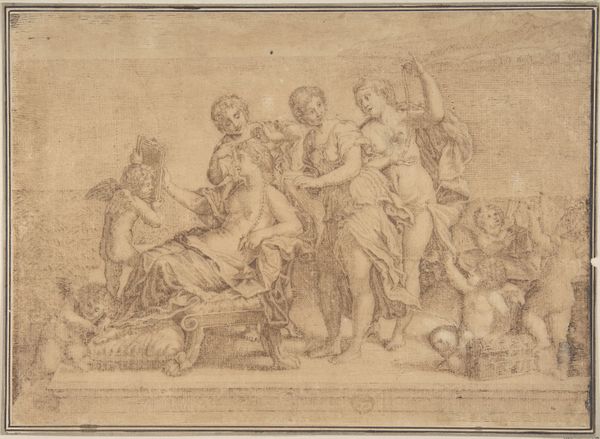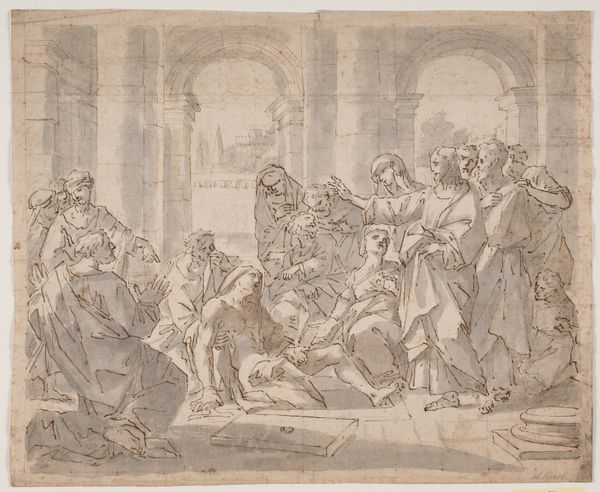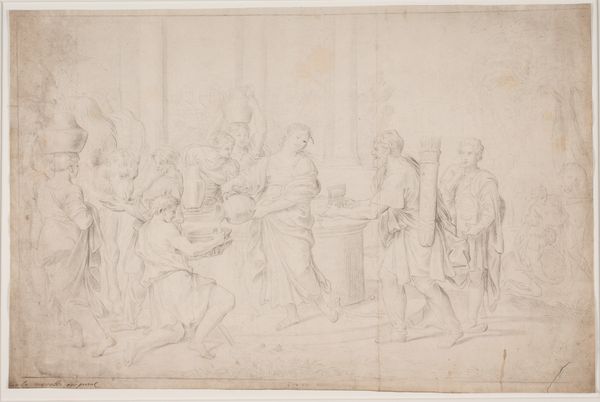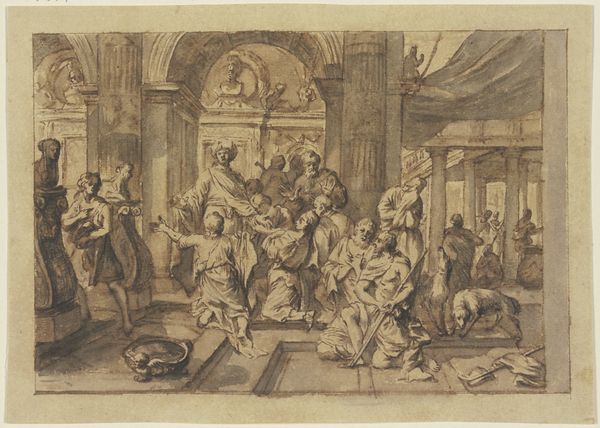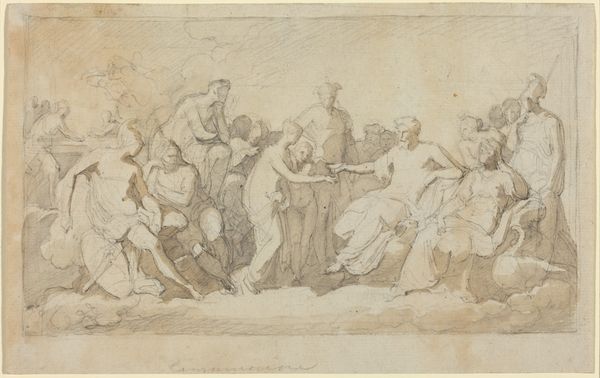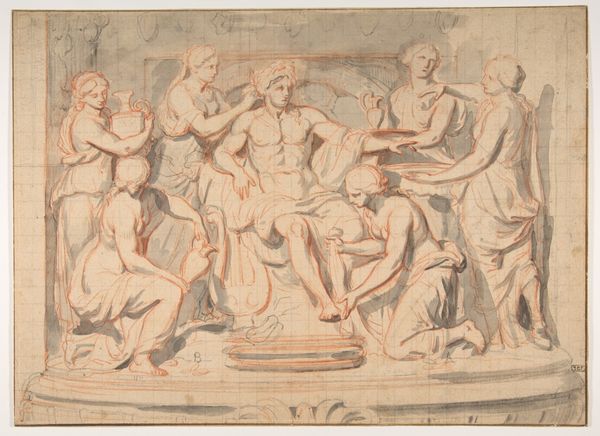
drawing, print, pencil
#
portrait
#
drawing
# print
#
classical-realism
#
figuration
#
ancient-mediterranean
#
pencil
#
history-painting
#
academic-art
Dimensions: Sheet: 3 15/16 × 6 5/16 in. (10 × 16.1 cm)
Copyright: Public Domain
Curator: Immediately, I feel the weight of inevitability looking at this scene. The somber tones, the figures draped in robes. It speaks of a heavy, historical moment. Editor: Indeed. What we're viewing is a drawing, executed in pencil and print, titled "Copy after David's 'The Death of Socrates.'" It was made sometime between 1787 and 1899 by an anonymous artist and it is housed at the Metropolitan Museum of Art. The composition closely mirrors Jacques-Louis David's well-known painting of the same subject. Curator: The figure of Socrates himself, defiant even in death, seems to emanate this sense of stoic resolve. Notice the gesture, pointing upwards, perhaps a final act of teaching even as he accepts his fate. What psychological power it holds! Editor: Absolutely, and in its time, the image held significant political power. David's painting, and thus this copy, reflects a renewed interest in classical ideals during a period of revolution and upheaval. Socrates’s death was seen as a parallel to revolutionary sacrifice, fueling the sentiment towards political change. We see the use of classicism not just as an aesthetic choice but as a potent form of political expression. Curator: Look closely at how the artist uses light and shadow. The stark contrast emphasizes the drama of the scene, but also subtly highlights different emotional states. The faces in shadow express grief, while Socrates is bathed in a brighter light—perhaps representing his enlightenment. It's not just depicting an event; it's rendering emotional truth through visual metaphor. Editor: Consider also the socio-political dimensions. The creation of copies like this allowed for the dissemination of David's political message. It provided wider accessibility for people beyond the elite circles who had the privilege of viewing the original, influencing public opinion. This demonstrates the political force and institutional influence art could wield during that period. Curator: For me, works such as these, echoing the sentiments of history and art, give one cause to pause, making one truly wonder about our continuous, often unacknowledged human story and condition. Editor: And through studying the history of such iconic images, we learn so much about art's complex connection to cultural and political shifts—allowing us to question the accepted canons of history and representation.
Comments
No comments
Be the first to comment and join the conversation on the ultimate creative platform.
